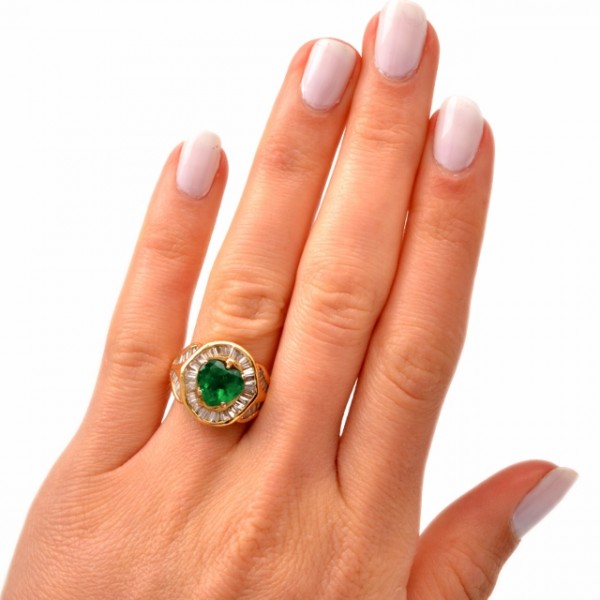
Real vs Fake Emeralds: How to Spot the Difference
Emeralds, with their deep green allure, symbolize renewal, growth, and prosperity. But how can you be sure your emerald ring harbors a gem of genuine earth-born beauty rather than an imposter? This guide delves into the essence of real versus fake emeralds, equipping you with the knowledge to distinguish the authentic from the counterfeit.
Understanding Emerald Authenticity
The Rich History and Rarity of Emeralds
Emeralds boast centuries of rich history, favored by monarchs and mystics alike for their supposed healing powers and symbolic value. As a variant of beryl, their signature green results from chromium and vanadium traces. The rarity of emeralds, sometimes surpassing diamonds in value, contributes to their desirability and significance as May’s birthstone.
The Three Types of Emeralds
- Natural or Mined Emeralds: The crown jewels of the gemstone world, formed over millennia and prized for their unparalleled authenticity and value.
- Synthetic Emeralds: Man-made gems sharing the chemical makeup of natural emeralds but lacking in historical depth and resale worth.
- Imitation Emeralds: Crafted from materials like colored glass, these facsimiles mimic emerald’s appearance without embodying its essence or value.
How to Identify Real Emeralds
The Hallmarks of Authenticity
Look for Flaws
Contrary to what one might expect, the presence of flaws or inclusions in emeralds often signifies their natural origin. Perfect clarity could indicate a synthetic or fake gemstone.
Assess the Color
The true emerald hue is a deep, velvety green without brownish undertones. Authentic emeralds captivate with their intensity, while imitations often fall short in vibrancy.
The Sparkle Test
Genuine emeralds do not exhibit the rainbow sparkle typical of diamonds; an overly brilliant emerald may not be real.
Beware of Doublet and Triplet Emeralds
These composite stones, layered with other materials, betray their authenticity under close inspection. These are emeralds that have been sliced, then backed onto another material such as plastic or glass. Check the stones’ edges to see if there are any lines indicating other layers of material.
Consider Cut and Carat
True emeralds are cut to enhance their color and reduce visibility of inclusions. Their density makes them heavier than their counterfeit counterparts. Fake emeralds are much lighter in weight.
Price as an Indicator
An unbelievably low price for an emerald should raise red flags about its authenticity.
Ensuring the Authenticity of Your Emeralds
If doubts persist regarding your emerald’s authenticity, professional appraisal by certified gemologists, such as those at Dover Jewelry & Diamonds, can offer peace of mind and validate your gemstone’s genuine nature.
Choosing Authentic Emerald Jewelry
To avoid the pitfalls of purchasing fake emeralds, explore Dover Jewelry & Diamonds’ curated selection of Certified Authentic Natural Emerald Jewelry. From exquisite rings to breathtaking necklaces, each piece promises the timeless beauty only true emeralds can deliver.
In navigating the complex world of emeralds, understanding their history, types, and identifying features becomes crucial. Armed with this knowledge, you can confidently invest in genuine emerald jewelry, ensuring your piece not only captivates with its beauty but also carries the rich legacy of this esteemed gemstone.


